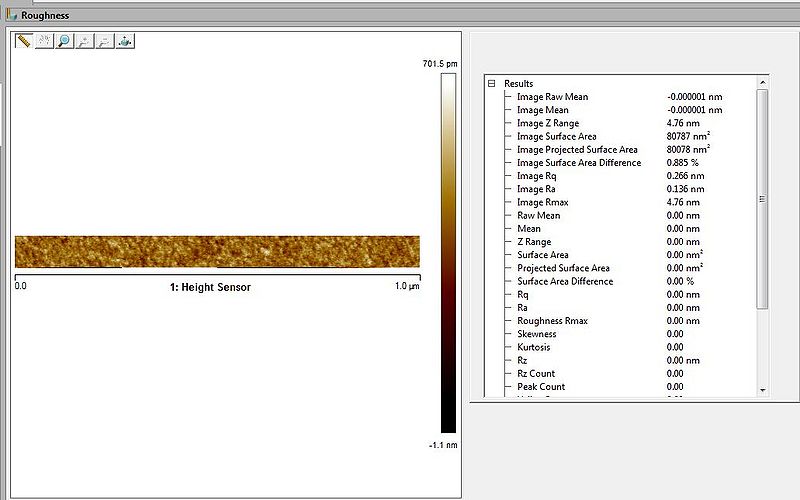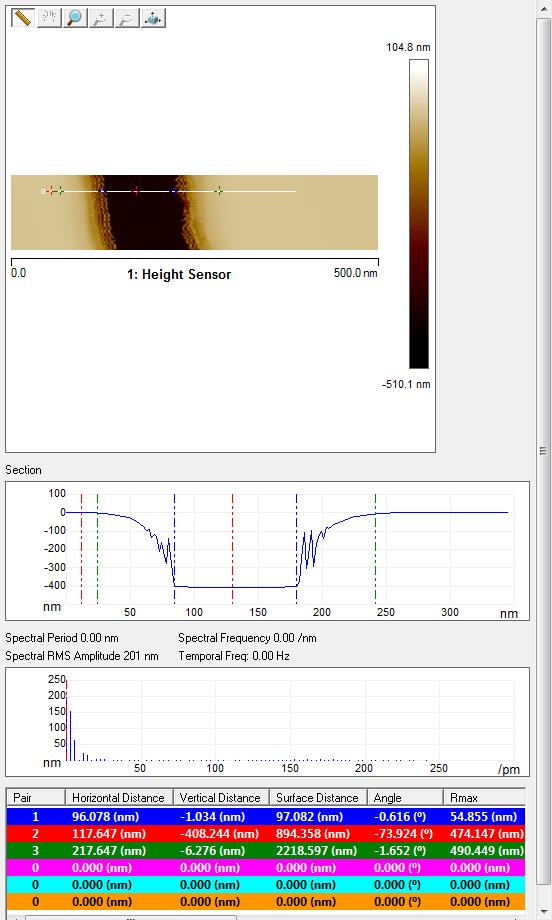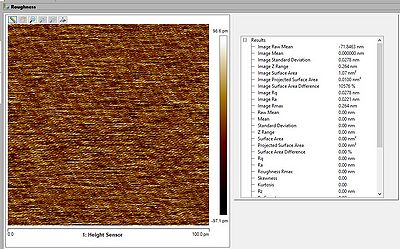Specific Process Knowledge/Characterization/AFM: Atomic Force Microscopy/AFM Icon Acceptance: Difference between revisions
| Line 216: | Line 216: | ||
===Demonstrating roughness measurements on silicon=== | ===Demonstrating roughness measurements on silicon=== | ||
#ScanAsyst with ScanAsyst-air | |||
*CL on | *CL on | ||
*512x512 | *512x512 | ||
*0dg | *0dg | ||
Revision as of 15:27, 18 May 2020
Feedback to this page: click here
Accessories following the systems
| Equipment | AFM Icon | AFM Icon 2 | ||||||||||||||
|---|---|---|---|---|---|---|---|---|---|---|---|---|---|---|---|---|
| Chucks |
|
| ||||||||||||||
| Holders |
|
| ||||||||||||||
| Modes included |
|
| ||||||||||||||
| Probes that followed the systems |
|
| ||||||||||||||
| Samples |
Calibration samples for getting quantitative modulus measurements:
|
|
AFM Icon-Pt 1: Acceptance tests done
Noise tests
Sensor noise
Tappingmode, OTESPA-R3 probe used.
First we made a false engage (scanning in air):
Turn off gain 0 0
Z range 0.2my
Scan size 0.01nm
We saw some 50Hz noise (electrical - or maybe pumps): Rq 15 pm (specs 35pm)
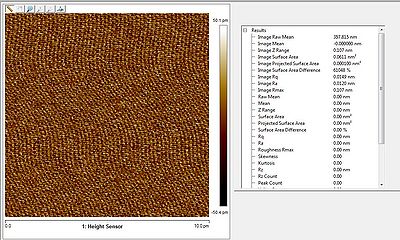
System noise
Noise on sample: scan size 0.1nm
we started with 1my scan size to optimize the scan.
2.43Hz
256 lines
Z range at 2my to get sub nanometer resolution in Z
Rq: 54,5pm (plade vibrator koerte udenfor)
Rq: 23pm uden vibrator koerende + ro og med aaben hood.
Rq:71pm uden vibrator koerende + ro og med lukket hood

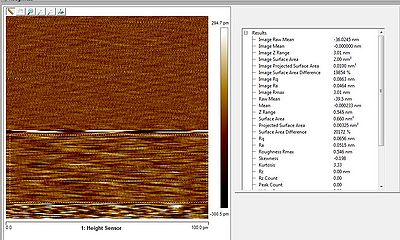
Roughness
HAR: 200nm wide 400nm deep
HAR: 2µm wide 6µm deep
Graphene KPFM measurement
![]()
![]()
Height image: The graphene and structuring in graphene is not visible
Potential image: Potential difference between grapheme and non-graphene is visible
Phase: Phase imaging maps the phase lag between the periodic signal driving the cantilever and the oscillations of the cantilever. Changes in phase lag often indicate changes in the properties of the sample surface. Here the structuring in the graphene is very clear
AFM Icon-Pt 2: Acceptance test 
Noise tests
Sensor noise
Tapping ]mode, OTESPA-R3 probe used.
First we made a false engage (scanning in air):
Turn off gain 0 0
Z range 0.2my
Scan size 0.01nm
Roughness: Rq 28 pm (specs 35pm)
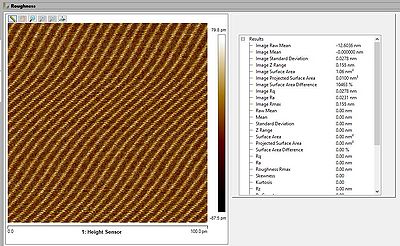
System noise
Noise on sample: scan size 0.1nm
we started with 1my scan size to optimize the scan.
2.43Hz
256 lines
Z range at 2my to get sub nanometer resolution in Z
Rq: 28 pm
Demonstrating roughness measurements on silicon
- ScanAsyst with ScanAsyst-air
*CL on
- 512x512
- 0dg
- ScanAsyst noise threshold: 1
- PeakForce amplitide 300 nm
- Peak force frequency: 2 Hz
- Rq: 0.247 nm
- ScanAsyst with ScanAsyst-air
- CL off
- 512x512
- 0dg
- ScanAsyst noise threshold: 0.2
- PeakForce amplitide 300 nm
- Peak force frequency: 2 Hz
- Rq: 0.235 nm
- ScanAsyst with TAP150A
- CL on
- 512x512
- 0dg
- ScanAsyst noise threshold: 1
- PeakForce amplitide 75 nm (was set as standard from the probe settings)
- Peak force frequency: 2 Hz
- Rq: 0.238/0.250 nm
- Tapping mode with TAP150A
- CL on
- 512x512
- 0dg
- Rq: 0.214 nm
- Tapping mode with RFESP-75
- CL on
- 512x512
- 0dg
- Rq: 0.224 nm

